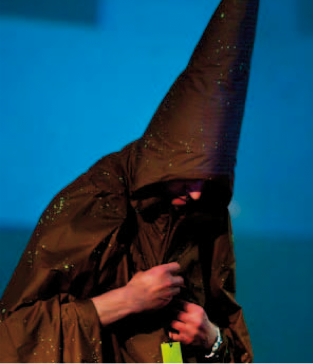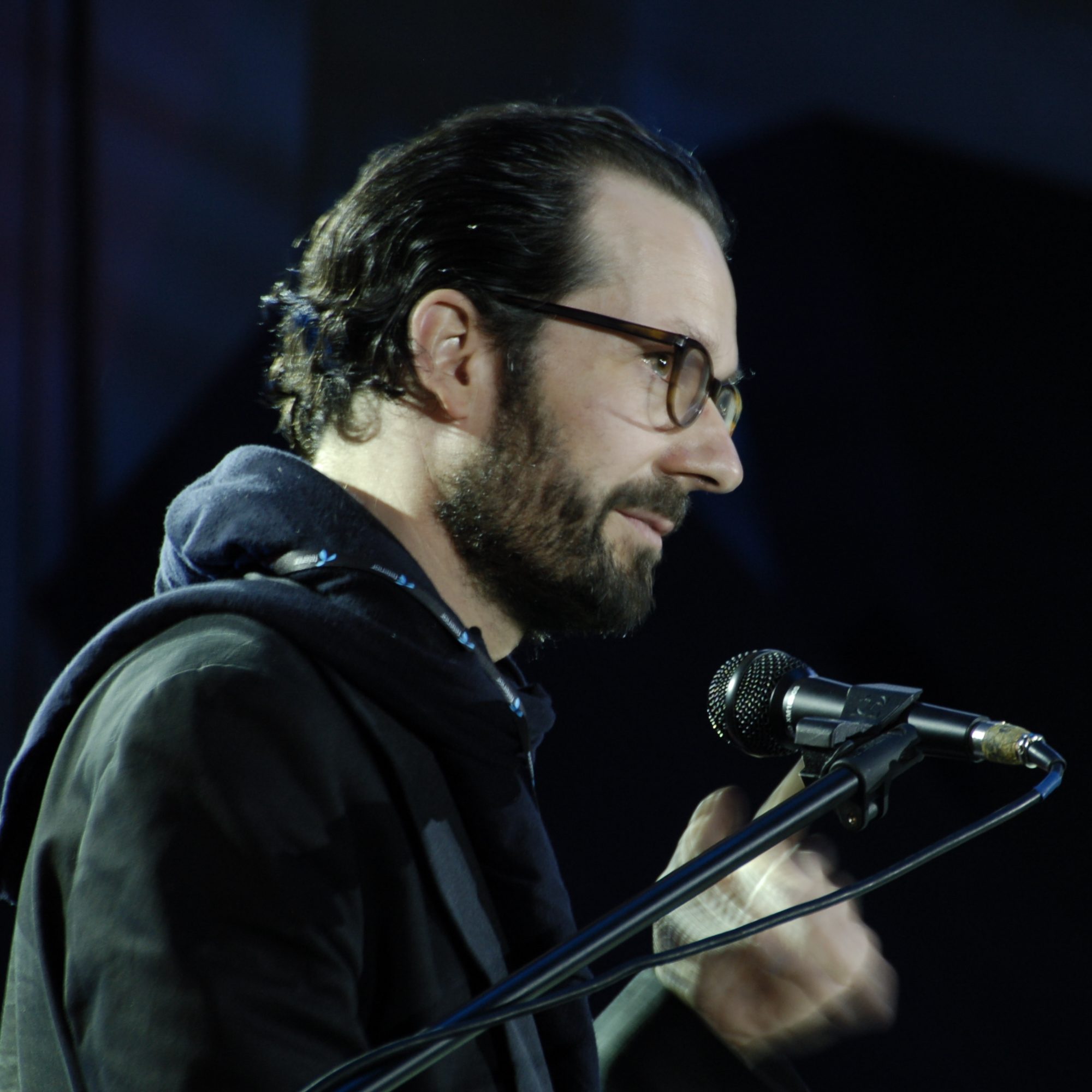
PRESS OVERVIEW OF BELGRADE DESIGN WEEK – BLUEPRINT
THE FUTURE IS READY TO BEGIN
Belgrade Design Week (BDW) is a paradox. The city has no design reputation to speak of, yet it hosts an annual affair that attracts top-flight speakers from around the world. Just as surprisingly, it showcases a few regional products and designs that stand up to the best European standards. The main event this year took place in the National Library of Serbia, a respectable, copper- roofed, mid-Modernist building by Ivo Kurtovic, which opened in 1973 and was rehabilitated in 2011 for the BDW Conference.
BDW founder and curator Jovan Jelovac proved to be an excellent MC for the packed schedule. A natural showman, he introduced each speaker as if hosting a super-hip Gala Performance, then asked them questions with an informed cosmopolitanism worthy of a top London, New York or Milan event. Plus, he somehow juggled incessant technical problems with the demands of live streaming. When he insisted that a break would be 20 minutes max, that meant at at least 40 minutes to shmooze and eat ice cream outside in the baking Belgrade sunshine.
Ole Jensen dons his medieval-style hat
The speakers Jelovic lined up were an eclectic bunch, spanning product design, architecture and advertising. Not everyone was as masterly as Jelovac on stage: Danish designer Ole Jensen, who shuns digital for a more hands-on workshop approach, flailed about and lost his grip on English but won a well-deserved round of applause when he donned the sinisterly medieval hood he’d designed for the Danish Design Council’s Haervejen Project.
Thessaloniki-based designers Beetroot gave a presentation about their acclaimed Greek Monsters exhibition project (rather like a family of mutated Nando’s chicken logos), in the context of Greece itself becoming ‘the economic monster of Europe’. It was an exercise in triumph of hope over adversity, but the delivery was as if by a manic depressive. Nevertheless, Beetroot too had the audience cheering- one suspects a Eurovision-type regional solidarity with their beleaguered neighbour. Ad agency 180 Amsterdam took their name from a Francis Ford Coppola quote: ‘Whenever you get into trouble, keep going. Do a 180-degree turn.’ They tracked the great director down in California for further elucidation but, after another tech melt-down, the resulting clip of the great man was a damp squib- all he had to add was that advertising should be limited to a few hours a day. If only.
At the other extreme were some inspirational presentations, none more so than the legendary Brazilian architect Isay Weinfeld. With minimalist pre-amble, he presented a succession of images, objects, film clips and songs that inspired him, with no additional comment beyond naming each piece. Brazilian sculptors and painters, Andy Warhol, Fellini, Japanese food, Vivienne Westwood, Brazil itself, all of Yellow Submarine’s surrealistic Eleanor Rigby animation…over 50 items. The emotional intensity he built was unprecedented and left several hundred people stunned. ‘And now the results, some fragments of my work’ he said, before a fast-forward tumble of images of divine modernism, sensual concrete and wood, furniture and eclectic decor. Your correspondent later caught up with him at Belgrade’s super-chic Square Nine Hotel, which he designed – watch this space.
Also awe-inspiring and personal was designer Mathieu Lehanneur’s presentation of projects addressing questions from ‘how to born?’ (sic) to ‘how to die?’. Perhaps France’s best creative mind, he was a worthy recipient of the ‘Belgrade Grand Prix of Design’ award at the closing party, where he gamely offered a few lines of ‘Je Ne Regrete Rien’.
Some speakers impressed in milder ways. Martino Gamper’s wonderful adventures with chairs culminated in his Bench to Bench project in Hackney Wick- like guerrilla gardening but with street furniture. The leading practice from Serbia’s ex-Yugoslav neighbour Croatia, Studio 3LHD, presented works culminating in their dreamy Hotel Lone- their’s was a journey into accomplished and beautiful architecture and interior design.
Two speakers each came on like a slick-haired German Superman with suits and big ideas after a power-elite workshop on presentations. (These things are at last moving on from Steve Jobs’ template). Robert Klanten of Berlin publishers Gestaten Verlag was dazzling and comprehensive as he swept us through the origins, meaning and trends of the whole contemporary design universe.
Belgrade Design Festival 2012
Closing the conference, Patrik Schumacher led us into his new theory of the whole architecture universe. A partner at Zaha Hadid Architects, he didn’t mention her at all, but plenty of their projects flashed by, and he shares her dialect of architecturalese (texturally coded speech that has topologic fluidity, interlocking tectonically and morphologically in differentiated conceptual spaces etc etc). The theory’s Parametric Semiology, as laid out in new book The Autopoiesis of Architecture (Vol 2) is heavy, fascinating… and perhaps a little too disengaged from the reality of millennia of previous architecture.
It wasn’t all presentations. Nor even drinks and parties in überhip venues dotted like outposts of recession-oblivious designer cool across the beautiful but struggling city. There were exhibitions as well. For example, the Croatians mounted a crisp show of furniture and product design called Common Sense
and Sensibility, curated by Tatjana Bartakovic, in the entrance of the conference venue. The elegant simplicity of colour, form and unpretentious materiality indicates that the spirit of Dieter Rhams is alive and well, and design can thrive even in places where industry has vanished and government is indifferent.
Yugoslavia had a design culture that produced the Yugo car and its own (non-aligned) variations on socialist architecture. Novi Beograd, across the river from old Belgrade, is a whole city of socialist planning on a grid of wide boulevards, now embellished with PoMo offices the nightly throbbing of techno beats from party boats. The Genex Tower there challenges the Trellick Tower as the most striking Brutalist skyscraper anywhere. An excellent exhibition, Unfinished Modernisations at the Museum of Yugoslav History, comprehensively surveyed this glorious, now-dead, design era.
Across the ex-Yugoslav republics, there is hope that design culture is being reborn. But as Bartakovic says of Croatia, designers are working in ‘an age of new poverty’. Few recognise that design is a service industry that can help European countries survive in the new world order. Here’s hoping that by sampling and showcasing the global design scene, the annual Belgrade Design Week will inspire a new generation of Balkan designers- they can only make life better.
Trackback from your site.
